There are few kitchen food products more fun than edible flowers, and when the edible flowers are herbs, there are tons of health benefits as well. This is true for rosemary. Are rosemary flowers edible? They absolutely are! And besides that, they’re quite delicious. From tea to recipes to salads, rosemary blossoms can liven up your home and table. Let’s explore this in more detail.
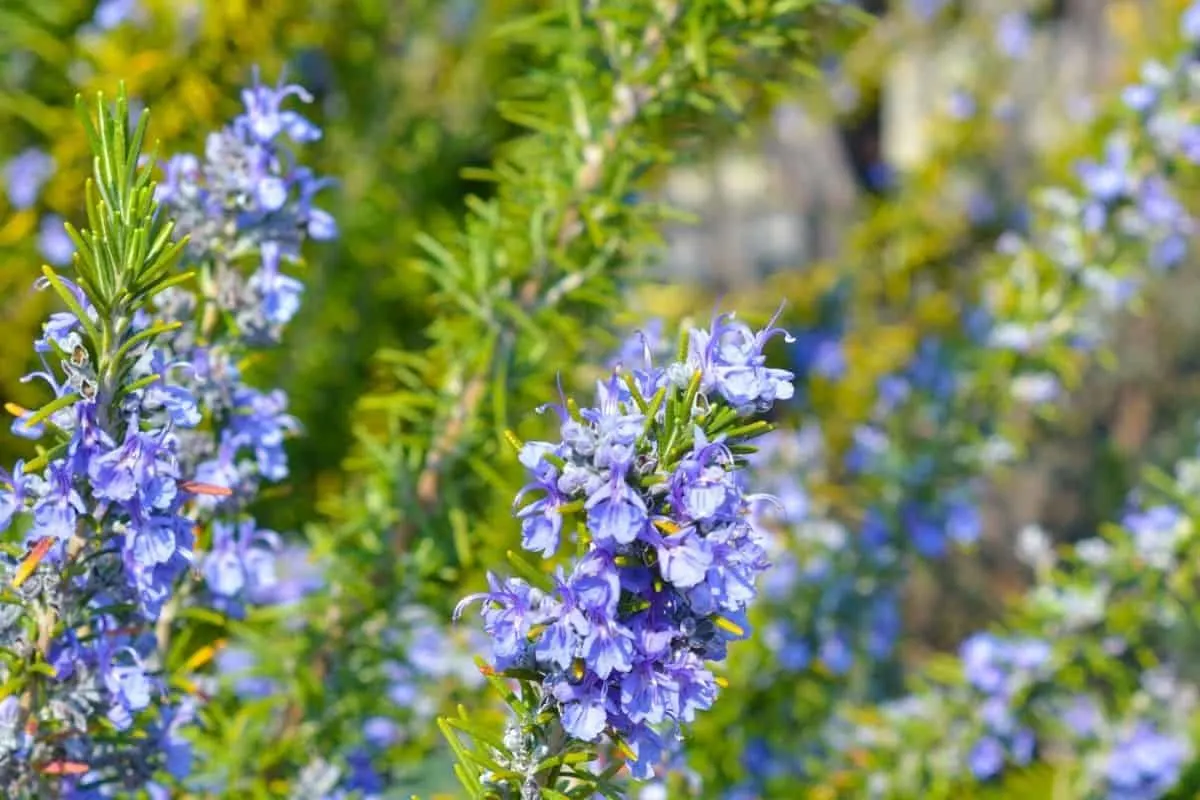
What Do You Do With Rosemary Blossoms?
Rosemary is often used as a landscape plant. It is a very versatile, evergreen perennial that has aromatic foliage and beautiful blooms that attract pollinators. They look lovely in any garden and are fairly easy to care for. But there is more to these landscape plants than just their good looks. What you may not know about common rosemary is that the beautiful spring blooms are also edible.
The scientific name for rosemary is Rosmarinus officinalis and this wonderful plant has a legendary history of use for both aromatic and culinary purposes. Moreover, rosemary has long been used in Ayurvedic and traditional herbal medicine.
- you can use rosemary flowers to scent your home if you’re making fresh bouquets
- rosemary blossoms are ideal for adding to potpourri
- and finally, you can use them as a delicacy in food and beverages
These tiny purple flowers appear when the rosemary plant blooms are edible and good for many different things. They are best when eaten fresh and they have a mild, delicate flavor. Some people believe that rosemary is most flavorful when eaten just before the blooms appear. However, that may be a matter of personal preference. The best way to know is to try it yourself and judge by taste when is the best time to use them.
Can we eat rosemary flowers?
So, which parts of the rosemary plant do you eat? Rosemary flowers are as edible as the leaves. You can use these aromatic flowers in recipes, crystallized for baked goods, infused into olive oil, and even steeped in herbal teas.
When planning to eat rosemary flowers, be sure to make sure you are choosing from the number of cultivars that are safe to eat:
- golden rain
- miss Jessup’s upright rosemary
- Tuscan blue
- blue spires
- Gorizia rosemary
- Benenden blue
- Flora rosa
- Majorca pink
- Huntington carpet
- McConnell’s blue
- Irene
- Holly Hyde
- Hill hardy
Are there other parts of the rosemary plant that are safe to eat besides just the flowers?
What parts of rosemary are edible?
Using rosemary leaves as a herb in recipes is something we have always done, but if you’re growing your own rosemary, you should know that rosemary flowers are edible, too. You may even detect a tiny hint of sweetness in rosemary flowers.
Before using rosemary flowers as edibles, remove the leaflike green calyx that is at the base of the rosemary flowers. Then you can scatter the flower’s petals lightly on salads or whatever you want to garnish them with.
The herb flowers sometimes have a much more intense taste than the leaves of the herb. However, other enthusiasts suggest that the flowers are milder than dried rosemary leaves. Your safest bet is to taste them before adding them to a dish or recipe.
Don’t eat the rosemary stems. They are difficult to chew because they are woody.
What varieties of rosemary are edible?
You may be aware that there are different varieties of rosemary. Are all kinds of rosemary edible? The simple answer is yes.
Because common rosemary is edible, all varieties are safe to eat. However, they do vary some in their flavor and also in their growth habits. There are many varieties on the market today and because they look so similar, it can be confusing to differentiate them. There are, however, two major types: upright as an evergreen shrub and cascading as a ground cover or to trail down from a fence or trellis.
Beyond that, there are several different varieties in each category and all are edible. But which ones are the best for culinary purposes? The best answer to that is to ask the experts: professional chefs.
Most chefs prefer Tuscan Blue but other popular choices are Blue Spires, Spice Island, and Miss Jessup’s Upright. If you know that you want to use it for culinary purposes, you might try to find one of these varieties. Most garden centers and nurseries will only sell a few varieties of rosemary so you may want to call ahead to see what types they have or to ask if they have the specific variety you are looking for. Alternatively, you can also order from online suppliers.
Rosemary used for cooking
While all rosemary is technically safe to eat, there is a difference in the varieties used for cooking and those used to decorate your yard. Most varieties of rosemary are chosen for landscaping and these can include:
- Arp
- Dancing waters
- Golden rain
- pink rosemary
- white rosemary
While you can use these varieties for cooking too, most people prefer the varieties that are favored for cooking like Spice Islands, Blue Boy, and others listed above. The preferences for cooking are usually upright rosemary varieties and they usually have a higher oil content.
Are rosemary flowers good for you?
So, why do people want to eat these flower buds? The health benefits of rosemary and rosemary essential oil are well-documented, and many of these benefits also extend to rosemary flowers.
For one thing, rosemary has antiseptic, antimicrobial, and anti-inflammatory properties. They also serve antioxidant purposes, and extracts made from the leaves and flowers may help with any of the following.
- Digestion aid
- Promotes beneficial gut bacteria
- Increased alertness
- Improved circulation
- Headache relief
- Muscle and joint pain relief
- Dandruff treatment
Historically, the ancient Greeks believed that the flowers from rosemary bushes helped to improve memory. In recent studies, rosemary has been shown to help people improve their concentration, so who can say? At any rate, it’s worth a try.
Dangers of consuming rosemary
Can rosemary be poisonous? Are there any times when it is not safe to eat? Like anything, there is such a thing as too much of a good thing. Even safe-to-eat rosemary can make you sick if you ingest large quantities of it. Common symptoms of too much rosemary include:
- stomach upset
- vomiting
- intestinal irritation
- kidney damage and/or toxicity
- coma
Note that like all herbs, rosemary can interact with some medications. Specifically, speak with your physician if you take anticoagulants, ACE inhibitors, diuretics, or lithium.
How To Use Rosemary Flowers
If you’re trying to explore ways to use rosemary flowers, just imagine how you would use any other herbal flower or edible flowers. You can boil it or steep it and make fresh tea, or you can use it as a seasoning on food, just to name a couple of examples. But you may not know of the many other ways you can use rosemary in the kitchen. Let’s dive in and get creative with using these fragrant and delicious blooms.
1. Use rosemary flowers in cooking, salads, and recipes

One thing to note is that if you use rosemary flowers in recipes, the blossoms won’t stand up to heat as well as the leaves do. Because of this, rosemary flowers should be used in either savory or sweet dishes as a finishing herb.
Rosemary blossoms season lamb beautifully, especially if the meat is grilled. Other dishes that go well with rosemary flowers are beans and recipes with honey, apples, lemons, potatoes, tomatoes, or pears.
Rosemary flowers complement these herbs and flavors well:
- garlic
- onion
- lavender
- thyme
Try this recipe for Pumpkin and Red Onion Soup with Thyme and Rosemary Flowers. It looks yummy! If you have plenty of rosemary flowers, sprinkle them on a salad and you have the perfect meal.
2. Add rosemary flowers to potpourri
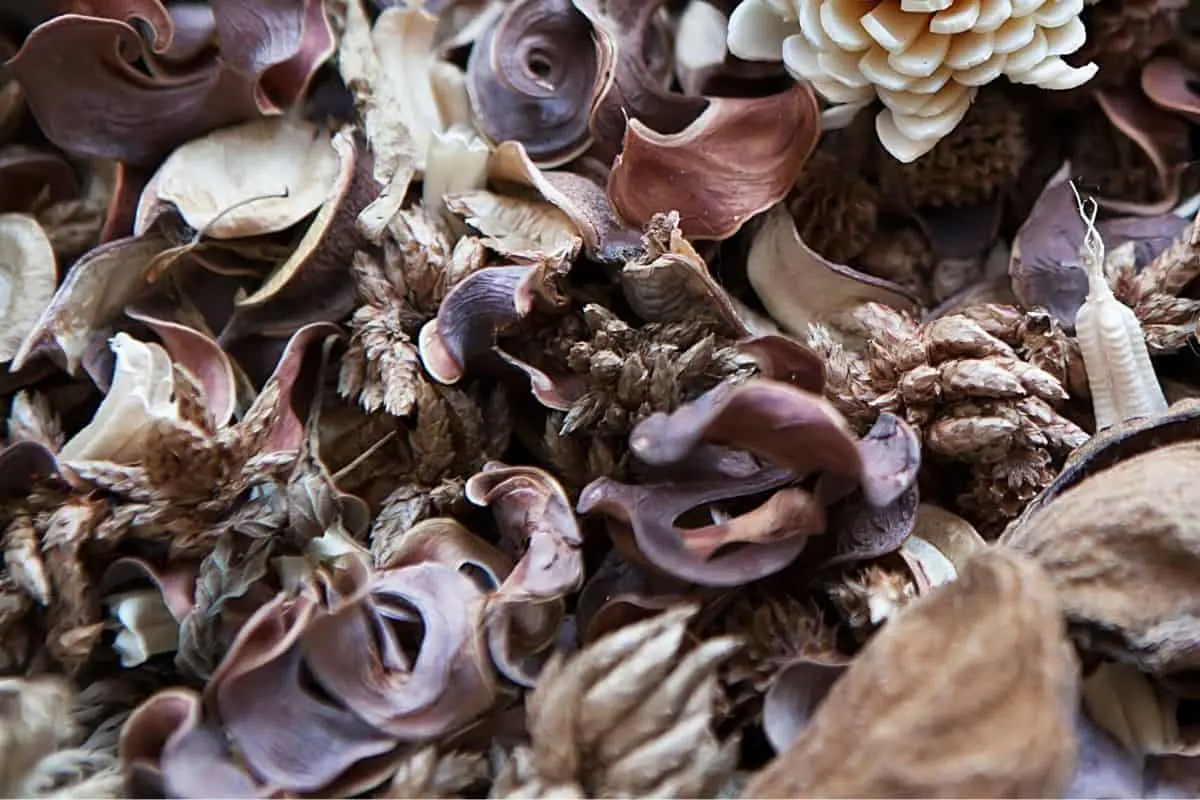
When you make potpourri, you can add your rosemary flowers to your mixture. You’ll get not just fragrance, but also some pretty color. Experiment with this to get the perfect mixture that you can enjoy anywhere you want.
3. Garnish fresh cut flower bouquets
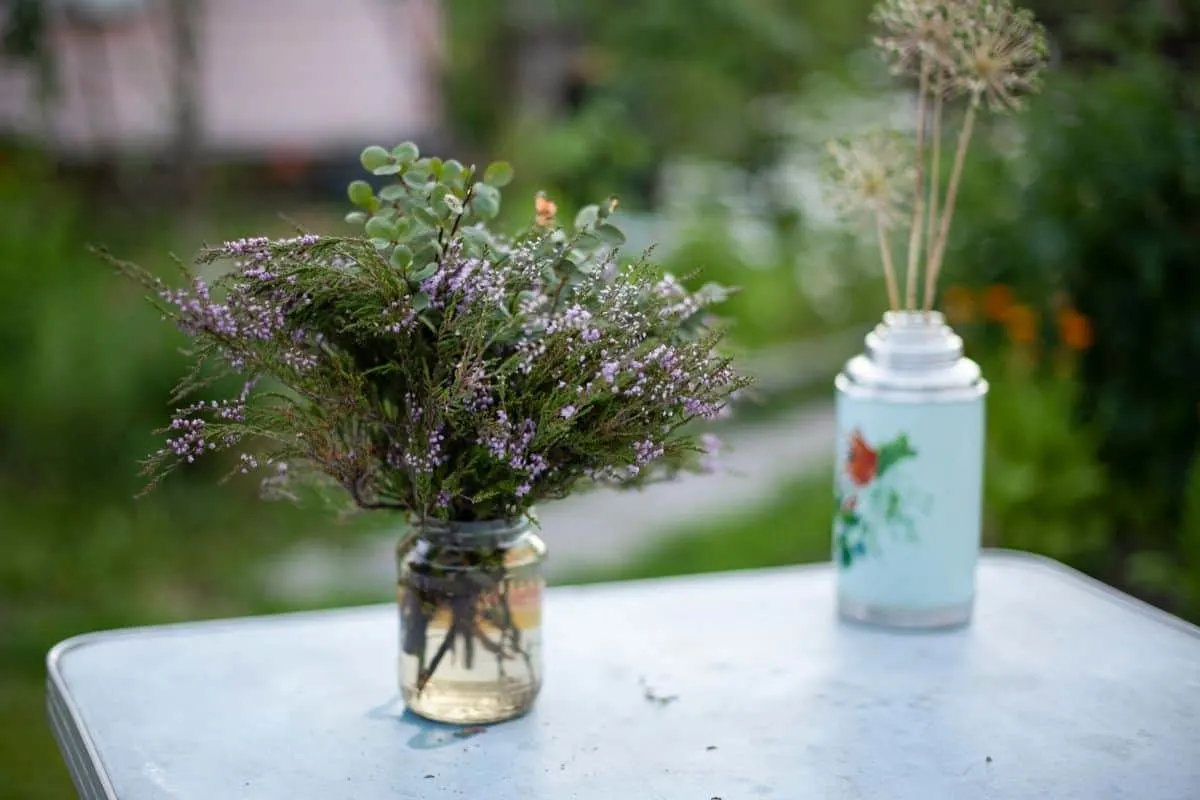
Rosemary also works well as a cut flower addition. If you’re arranging cut flowers, you can always add your rosemary flowers to your bouquet for a nice touch. With strong, sturdy stems, rosemary is the perfect addition to bouquets, as well as centerpieces. Cut rosemary is long-lasting and mixes well with many flowers.
4. Create beautiful sugared flowers
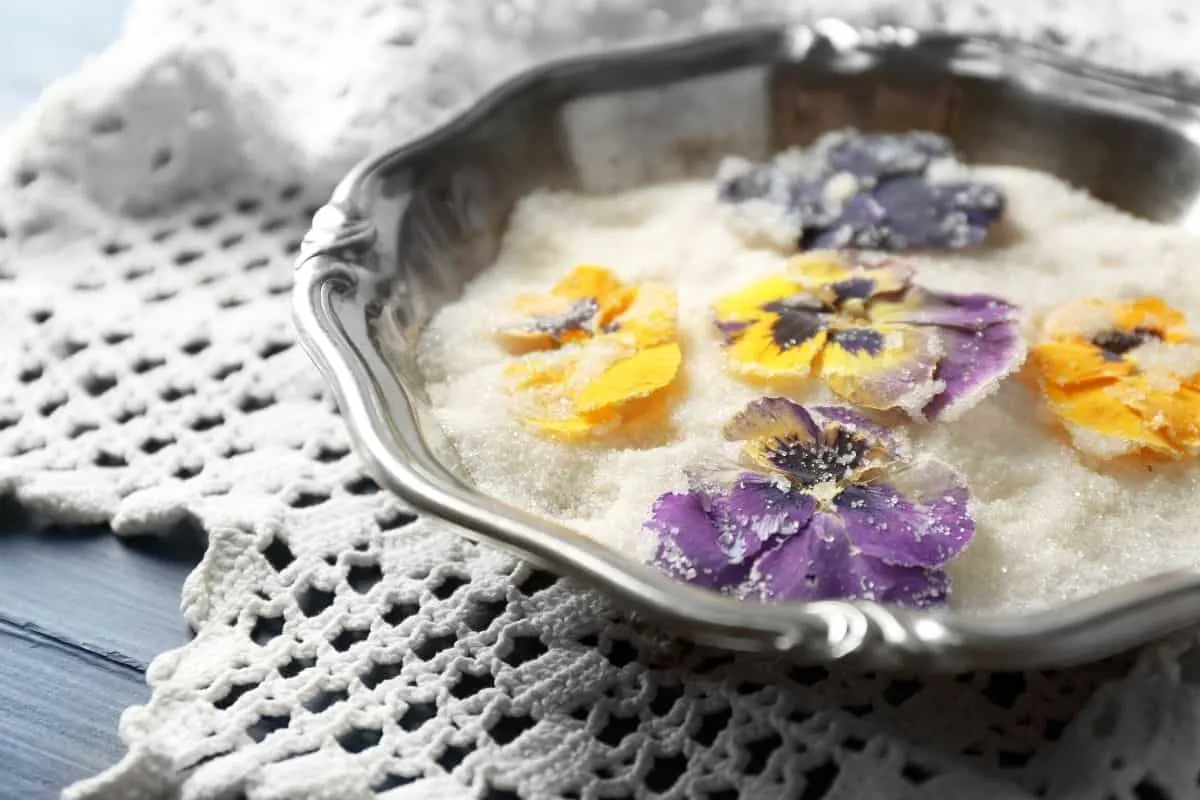
One of the most fun things you can do with any type of edible flower is to make sugared flowers. What you want to do is crystallize your rosemary flowers with sugar and egg, then use the sugared flowers to garnish baked goods.
5. Make rosemary-infused oil
If you have rosemary, there are few things more delicious to make with either the flowers or the leaves than rosemary-infused olive oil. This oil is bursting with flavor and is excellent for using on root vegetables like potatoes or when roasting chicken.
Also, this isn’t an ingredient you have to buy at an expensive boutique because it’s so easy to make it at home. When you make rosemary olive oil, you have a gorgeous oil with a deep green color. The delicate flavor is savory and it has a rich aroma.
To make rosemary-infused olive oil, all you need is fresh rosemary flowers or leaves and extra-virgin olive oil.
Here’s an important tip: if you wash your rosemary flowers or leaves before making the oil, be sure to allow them to dry completely because the moisture will spoil your oil when it’s in storage.
How to make rosemary infused oil
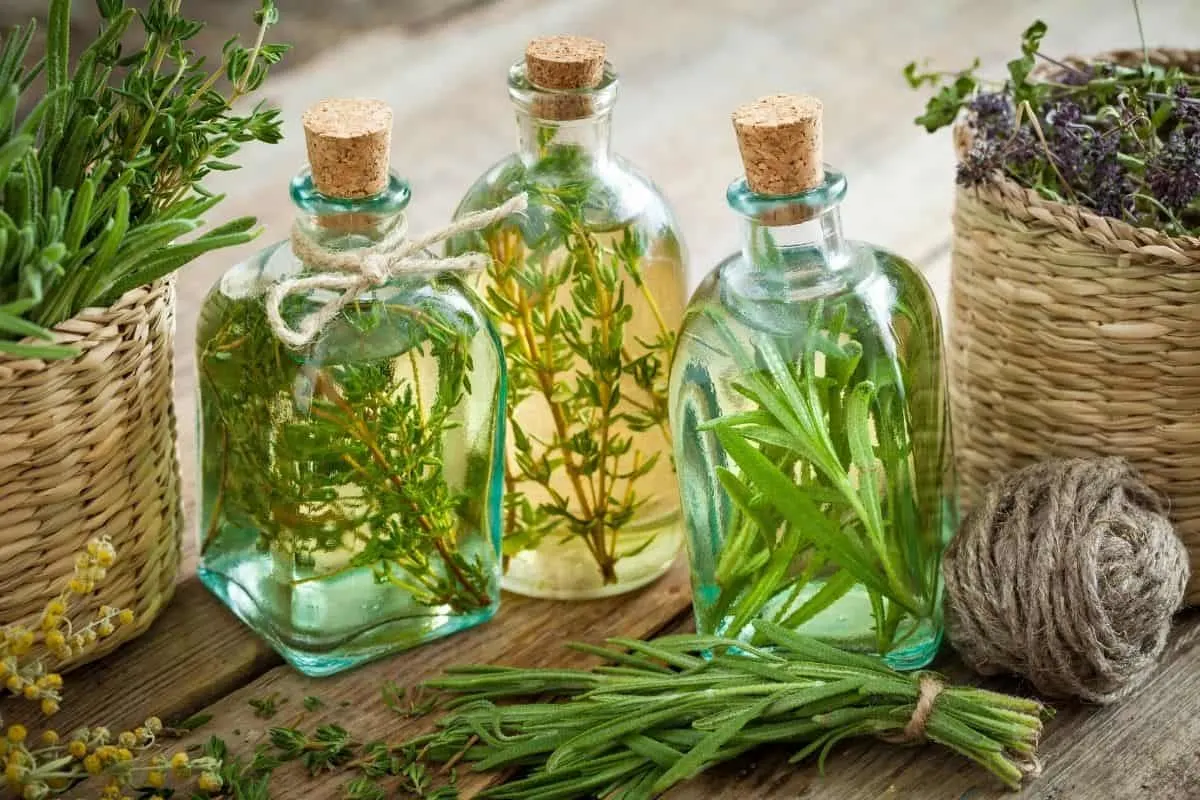
- Gather your ingredients
- Put the oil and rosemary into a slow cooker
- Cook uncovered on the high setting for one hour
- Turn the slow cooker off and allow your rosemary oil to cool until it reaches room temperature
- Strain your delicious oil into a clean dry glass jar and cover tightly
This infused olive oil will keep in the refrigerator or at room temperature for up to one month.
Use this oil on popcorn, on top of focaccia, and on roasted potatoes. You can also brush this oil on lamb chops, salmon, or roasted chicken.
6. Blend a gorgeous rosemary flower butter
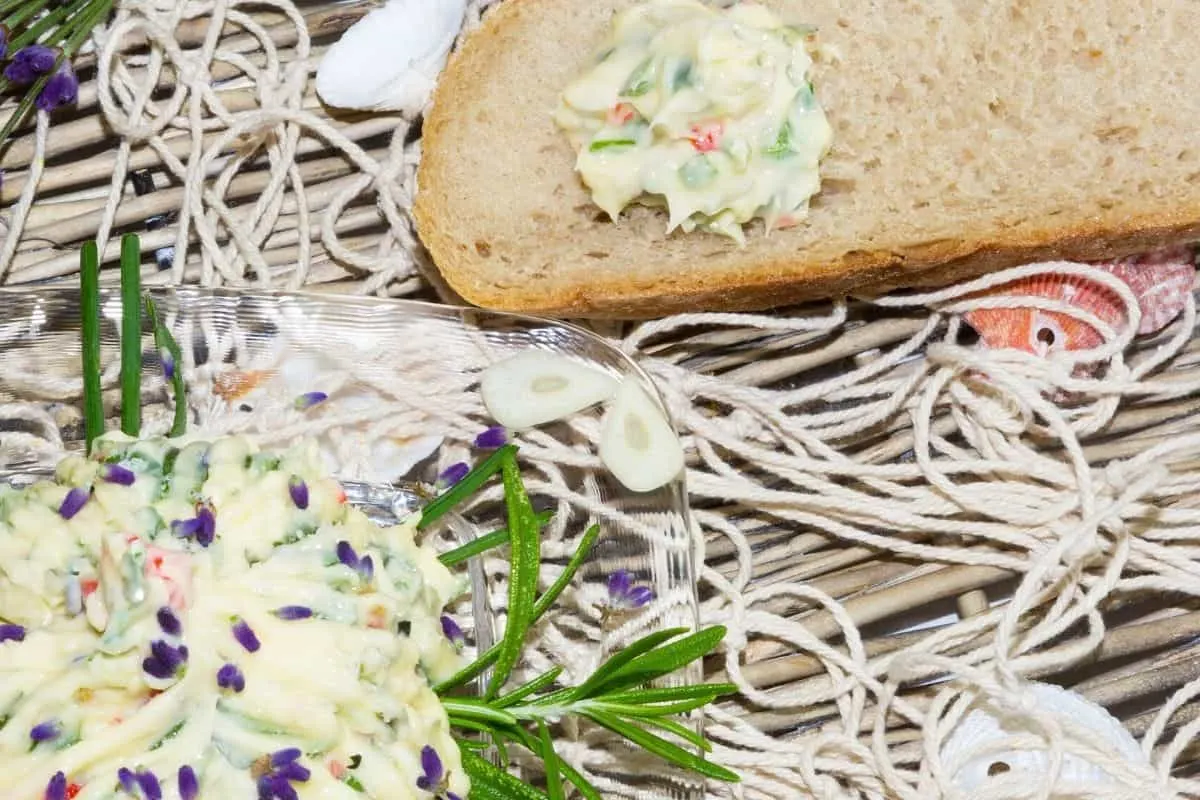
This may be one of our favorite ideas for using rosemary flowers in cooking. You can make a gorgeous rosemary flower butter blended with Grana Padano Italian cheese and sea salt. This butter is delicious spread on toast, rolls, and sandwiches.
7. Brew some soothing herbal tea
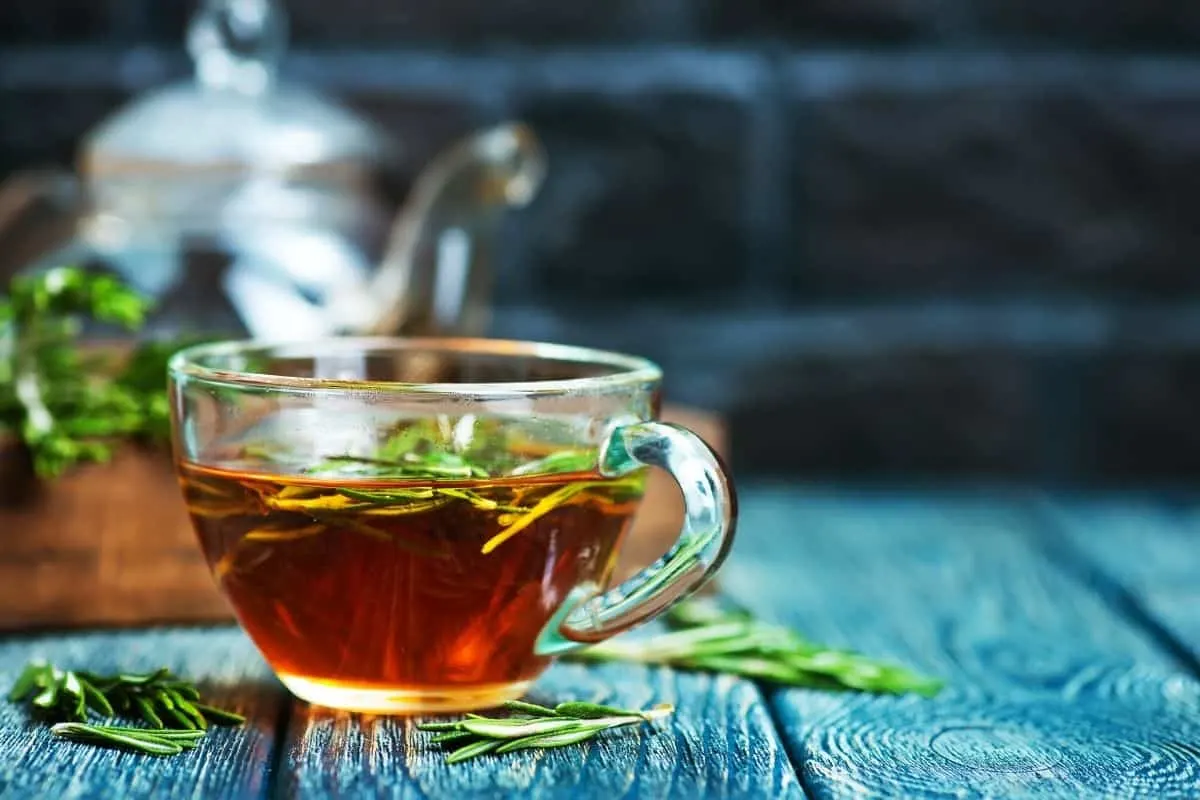
Although rosemary flowers don’t stand up to heat, that certainly doesn’t affect the flavor. Feel free to brew some tea with your rosemary flowers and whatever other herbs you use to make herbal tea.
Here is how to make herbal tea:
- boil 10-12 ounces of water
- add one teaspoon of loose rosemary flowers or leaves to your hot water
- allow your tea to steep for 5-10 minutes
- strain the rosemary flowers and leaves using a small-holed mesh strainer and discard them
- enjoy your rosemary tea with your choice of honey, sugar, or agave syrup
Alternatively, you can put your rosemary flowers and leaves into a tea infuser and allow them to steep for 5-10 minutes.
8. Rosemary ice cream
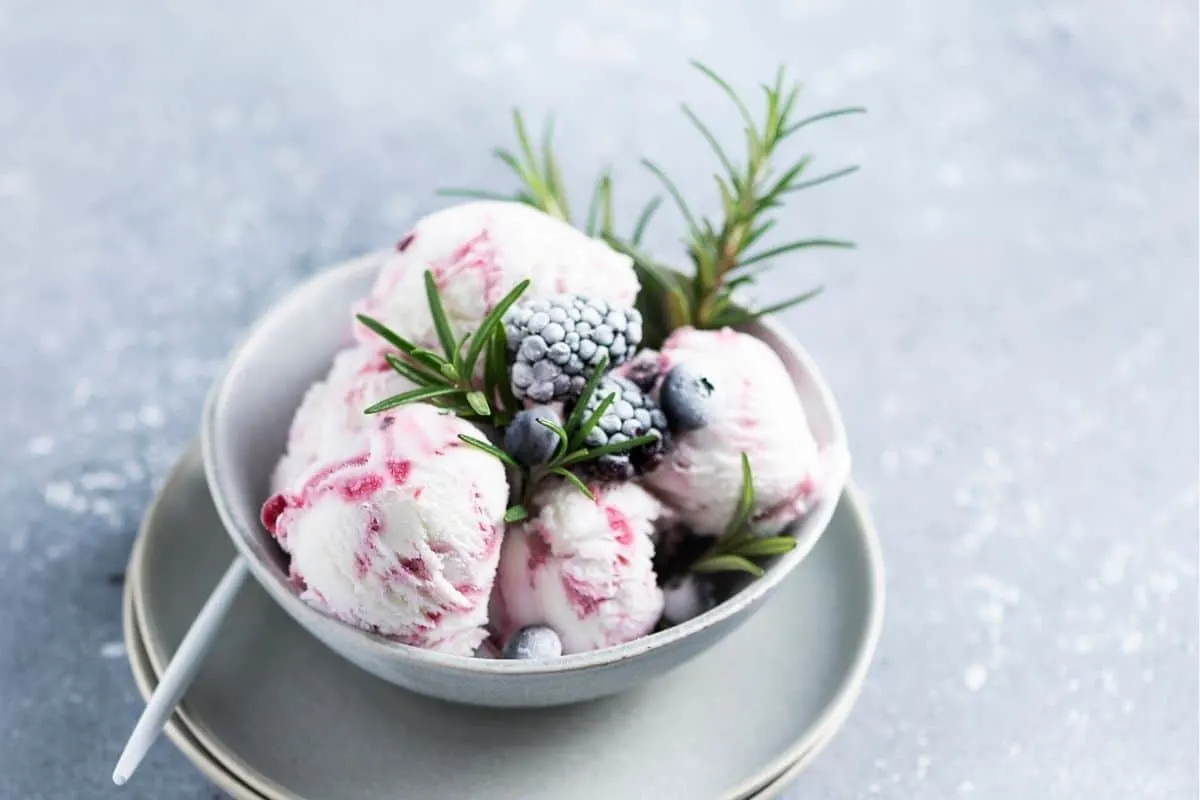
Did you know that you can use both your rosemary flowers and leaves to make delicious grown-up ice cream? This rosemary ice cream recipe is for vanilla ice cream that is infused with rosemary fresh from your herb garden.
With ingredients like brown sugar, vanilla extract, and thick double cream, you and your guests are in for a rare treat with this Mediterranean herb.
9. Make rosemary infused vinegar
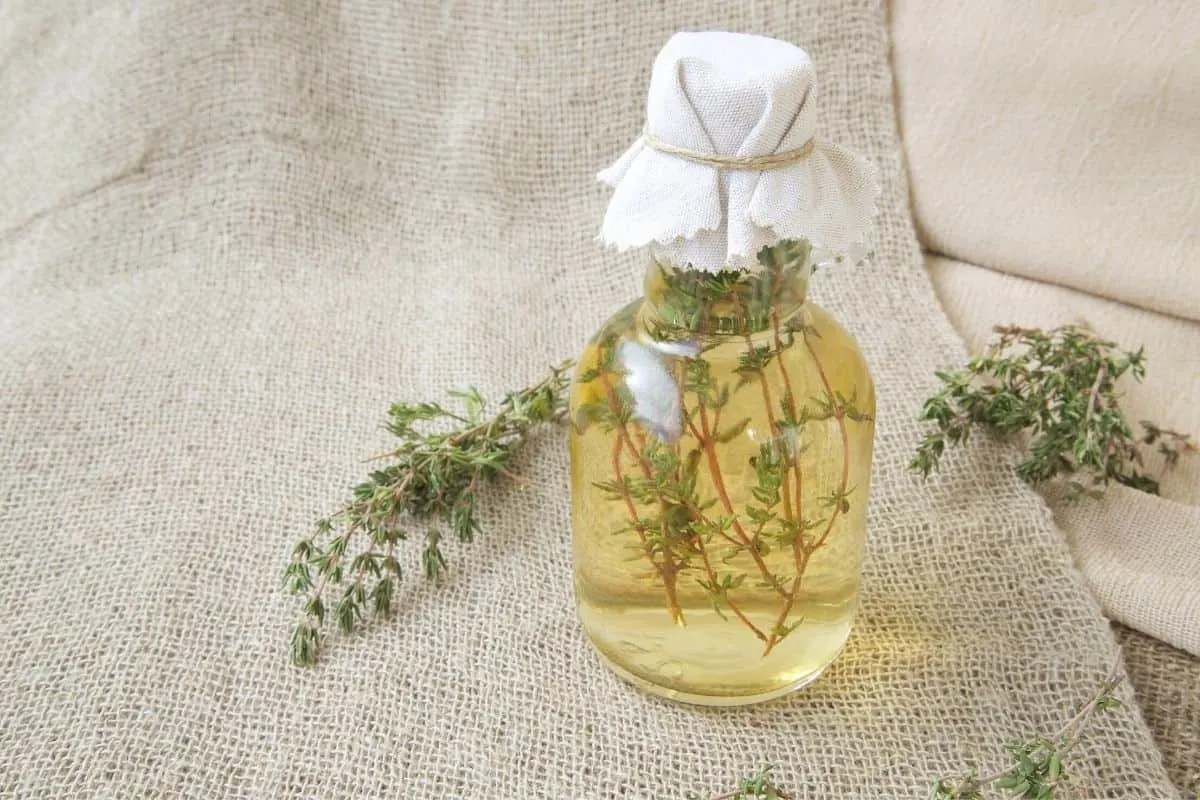
Add rosemary flowers to a jar of apple cider vinegar and store them in a dark, cool place for about a week. Strain the flowers and use the vinegar in dressings.
10. Add rosemary flowers to herbs and fruits infused water
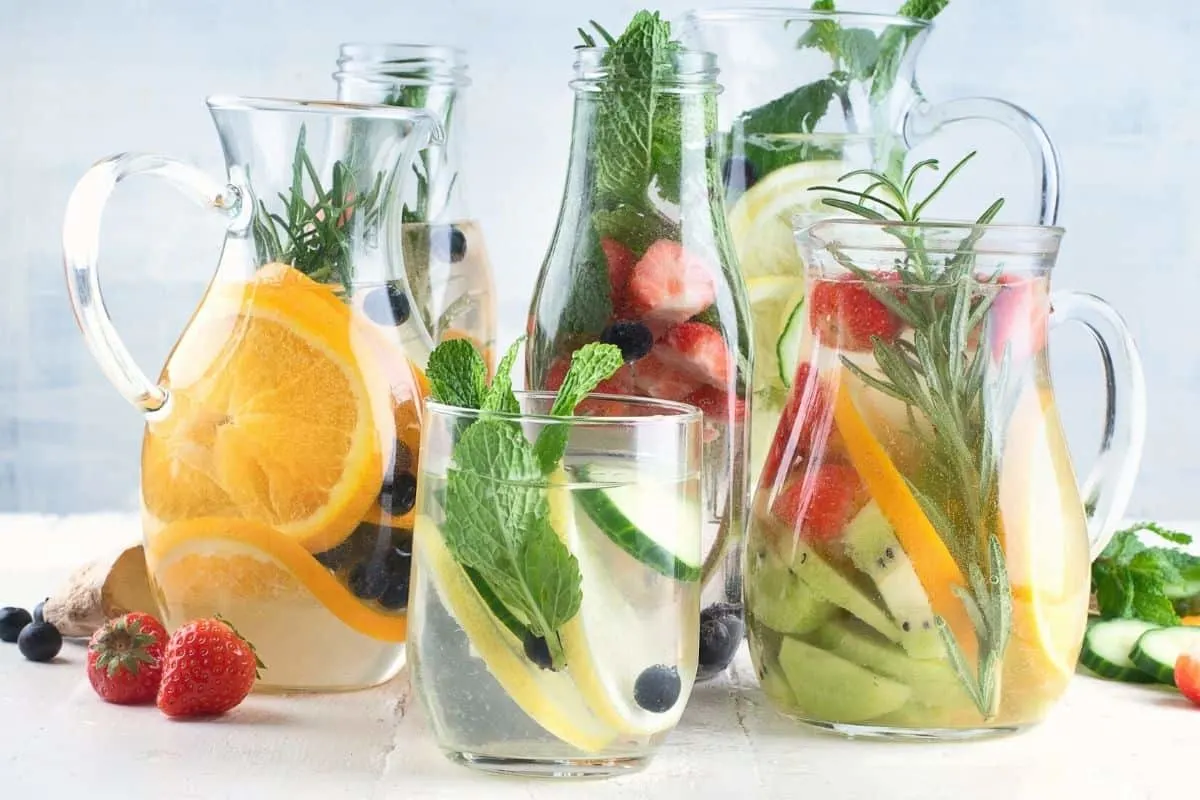
Drinking water that has been infused with herbs is not only healthy but also very refreshing. Add a sprig or two of blooming rosemary and enjoy it throughout the day for a great way to enjoy a healthy beverage that also tastes great.
Rosemary plant care
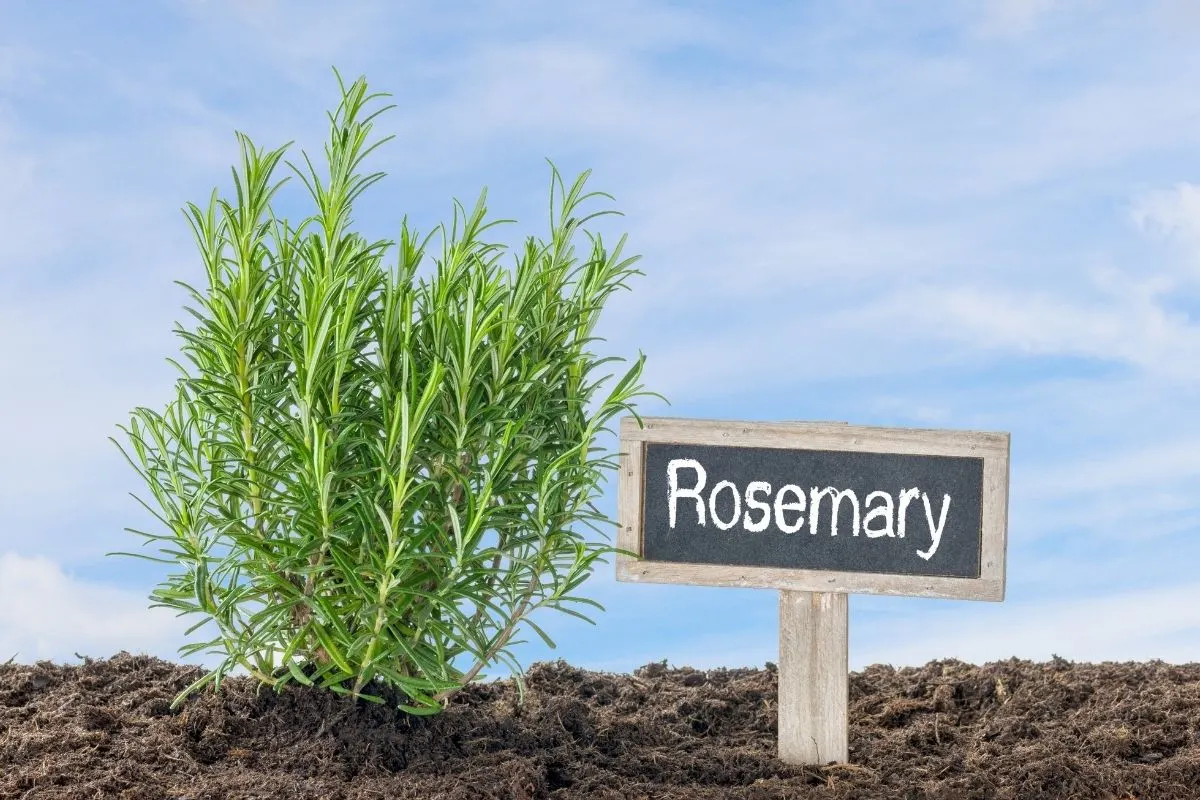
If you want to grow rosemary herb plants, it’s important to learn some basics about their care so that you can do it correctly and keep your plants healthy. Luckily, rosemary plant care is fairly easy, even if you’re a new gardener. Your rosemary plants will need a well-draining, sandy soil, and a minimum of 6 to 9 hours of sunlight a day. They do best in warm, humid environments and do not do well in extremely cold temperates. As a general rule, the rosemary plant should not be kept anywhere that is below 30 degrees F. You should also protect your plants from rough winter winds.
Many people decide to bring their rosemary plants indoors when winter sets in so planting in container gardens might be the smartest option if you live in cold climates or areas with cold winters. Avoid too much fertilizer, which can scorch the plants, and don’t overwater the soil or you can get powdery mildew that can damage the plants. In the ideal conditions, your rosemary will thrive and you’ll have lots of delicious herbs to enjoy.
Rosemary seeds can take from 15 to 25 days to germinate in the most ideal conditions. You should plant about 1/4 inch deep in a well-draining germination mix for best results. Even in the best conditions, only about 30% of the seeds can be expected to germinate. Because of this, you can plant the seeds heavily.
Next, let’s look at some common questions people often have about rosemary.
FAQ about rosemary
Here are the answers to some of the questions that are commonly asked about rosemary flowers and rosemary plants.
Should you remove flowers from rosemary?
Yes, remove the flowers from your rosemary to prevent your plants from becoming woody and straggly. This will also keep your rosemary plants producing fragrant leaves. Light pruning will keep the plant growing healthy for you.
When you remove the flowers, be sure to save them and use them in some of the recipes and ideas we’ve shared here.
How to prune rosemary plants
You know that light pruning is helpful, but how do you do it? Before pruning your rosemary, you have to consider the weather patterns in your area. Rosemary should be pruned sometime between spring (or early summer) to late summer.
Plan to prune your rosemary between four and six weeks before the first frost in the fall or winter. With sterilized pruning shears, trim off faded or dead flowers, along with any dead or damaged shoots. To encourage new growth, trim one to two inches off of the stems on the outside.
What to do with rosemary clippings?
Once you’ve pruned or cut back some stems, what can you do with them so that they do not go to waste? When you clip your rosemary, you can use the leaves and flowers in cooking or fresh bouquets. You can also use the cuttings to root more plants.
What to do with flowering rosemary?
It depends: if your plant is part of the landscape, let the blooms stay and enjoy the show. If you’re using the plant as a cooking herb, you want to remove the flowers, because once the plant blooms, the taste changes and becomes bitter, as the plant prepares to go to seed.
So, are rosemary flowers edible? Conclusion
As you can now see, rosemary flowers are edible. And there are many different ways you can choose to consume them. You can grow rosemary specifically for this purpose, or you can use these ideas to help when you prune back your rosemary so that the parts don’t go to waste.
Now that you know everything you can do with rosemary flowers, what’s stopping you? Whether you make a soothing tea or get creative with sugared edible flowers, you’re all set for making the most of your rosemary harvest. Do you have a favorite from the list of ideas above?
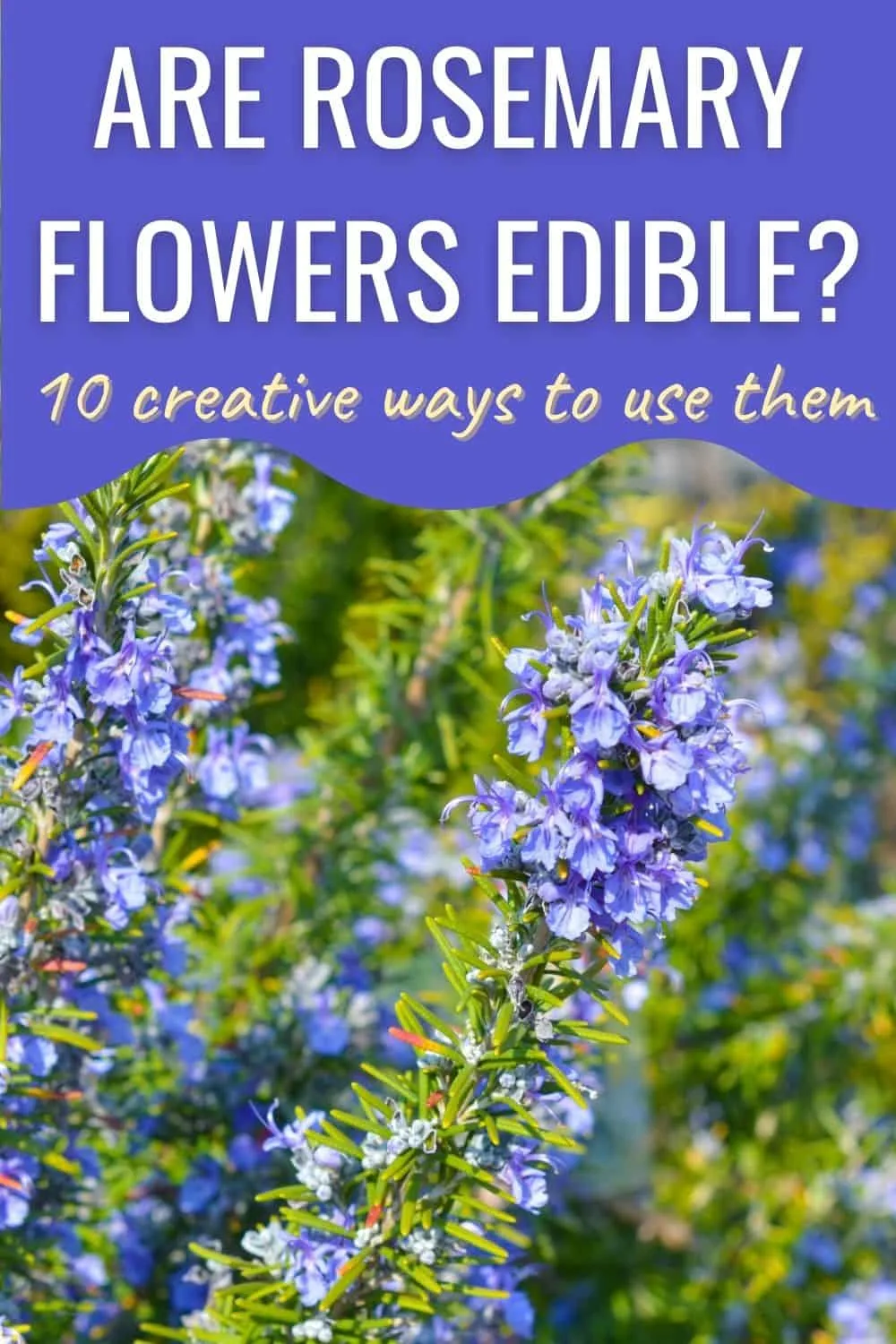
Adriana Copaceanu is a passionate nature lover living in the country on her dream property where she grows vegetables, lavender, and wildflowers that she shares with the wildlife they attract. When she's not in the garden, she loves spending time with her chickens and planning her next nature project. Check out her books below:
How to Grow Lavender for Fun and Profit: Lessons Learned from Planting Three Hundred Lavender Plants


What Causes Rosemary to Bloom? Understanding the Science Behind it - CactusWay
Monday 17th of April 2023
[…] tiny purple or blue flowers are edible and can be used in many ways. The flowers are best eaten fresh to enjoy the mild and delicate […]
45 Pretty Flowers You Can Eat - Try Some Today!
Monday 28th of November 2022
[…] Are Rosemary Flowers Edible? 10 Creative Ways To Use Them […]
7 Great Companion Plants For Lavender (And 3 To Keep Away From Them)
Tuesday 29th of March 2022
[…] Did you know that rosemary flowers are edible? […]
16 Best Companion Plants For Peppers (And 4 To Avoid)
Wednesday 16th of March 2022
[…] Did you know that rosemary flowers are edible too? Here’s how to use rosemary flowers. […]
Are Oregano Flowers Edible?
Wednesday 9th of March 2022
[…] Related: Are rosemary flowers edible? […]